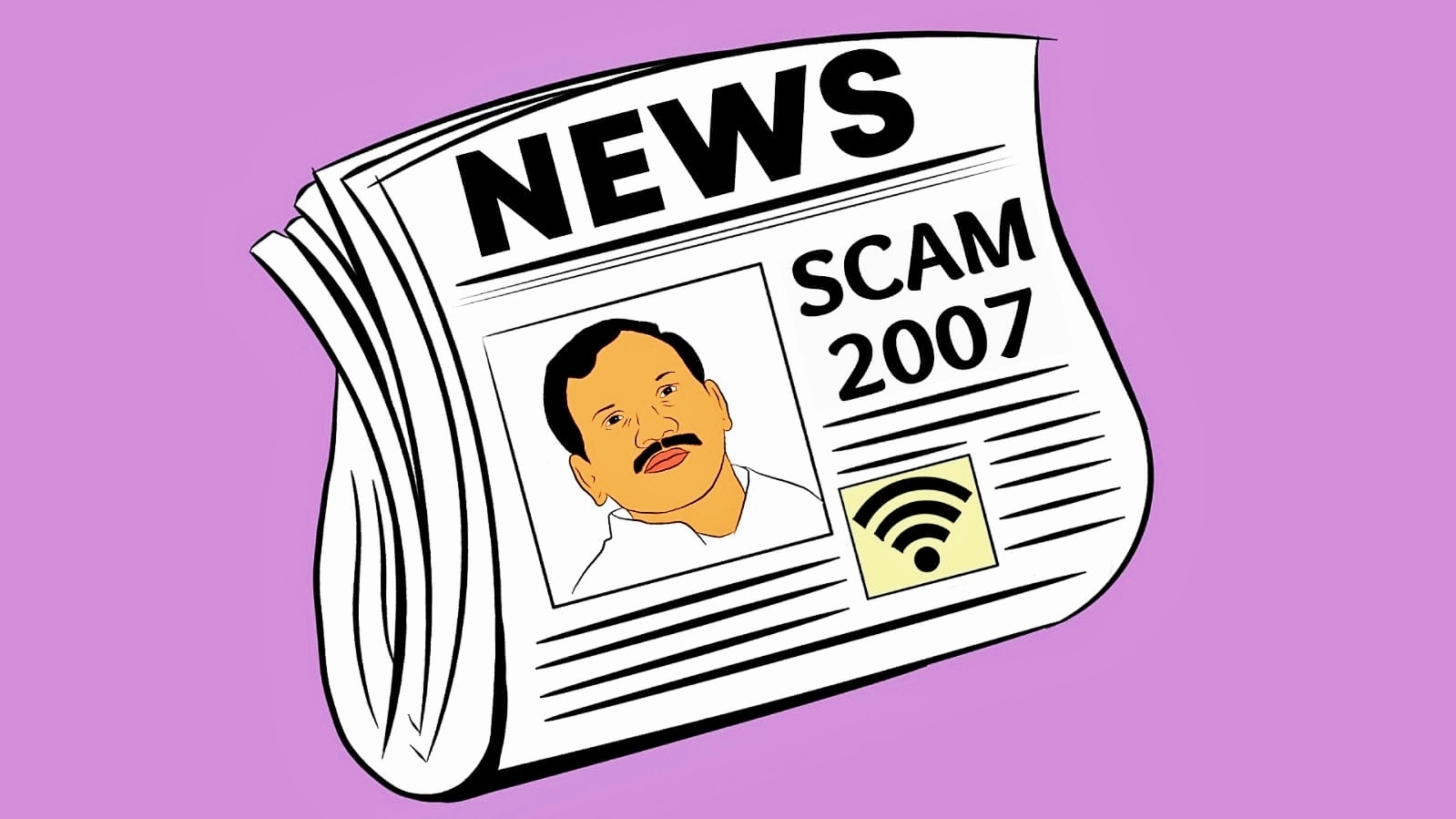
In the present era, one of the most valuable resources is the telecom sector and its various services. It has become almost indispensable in our daily life. From simple texts to Wi-Fi, the impact of telecom is huge. In the early 2000s, the Indian telecom sector experienced a great boom and was a fast-growing sector. Well, this advancement was accompanied by one of the biggest scams of India: the 2G Scam.
In fact, Time Magazine has called it the second biggest instance of abuse of executive power, just below Richard Nixon’s Watergate Scandal. In order to understand the timeline of the entire scam, let’s first understand what is a spectrum and who is a Comptroller and Auditor General of India.
Spectrum:
Spectrum, in simpler terms, refers to the range of invisible radio frequencies, over which wireless signals travel. This includes FM radio signals, Bluetooth, Wi-Fi and even our smartphones. Without any restrictions, if people are allowed to broadcast signals at any frequency, it would lead to total chaos and a lot of interference. This is why the governments divide a spectrum into bands.
To make it even simpler, imagine the spectrum as an open field and bands as roads that are constructed over the ground to enable movement from one side to the other. This also ensures that a message from one road does not interfere with other roads. The most commonly used spectrum by the telecom industry ranges from 800 MHz to 2300 MHz. Like any other natural resource, the government auctions these spectrums to companies. The first spectrum was auctioned in 2004.
Comptroller and Auditor General of India:
The Comptroller and Auditor General of India, henceforth CAG, is established by the Constitution of India. Their main function is to audit all the receipts and expenditures of the Government of India, State Governments and those bodies/authorities which are substantially financed by the government.
The 2G Spectrum Case
To understand the case, let's proceed in chronological order.
2007
- The then-telecom minister A. Raja began the licensing of the 2G spectrum and Universal Access Service.
- On 25th September, in a press release, the government declared the deadline for the application to be 1st October.
- The Department of Telecommunication received a total of 575 applications from 46 different companies, as of the aforementioned deadline.
2008
- On January 10th, the government decided to prepone the cut-off date for license allotment from 1st October 2007 to 25th September 2007. It further declared that only those who applied between 3.30 pm and 4.30 pm would be granted the license.
- Based on this new cut-off date, the government allotted 122 2G licenses and collected a total of ₹9200 crores as sales proceedings.
2009
- On May 4th, an NGO filed a complaint with the Central Vigilance Commission (henceforth CVC) about illegalities in the 2G spectrum allocation.
- On May 19th, another complaint was filed with the CVC about a low-cost spectrum grant to a certain company.
- Based on these two complaints, the CVC directed the CBI to investigate the matter.
- On July 1st, the Delhi High Court declared the act of preponing the cut-off date as illegal.
2010
- On March 13th, the Supreme Court upheld the Delhi High Court judgment and declared the cut-off advancement as illegal.
- On March 31st, the CAG Vinod Rai reported that there are large-scale irregularities in spectrum allocation.
- On November 10th, he reported that the government incurred a loss of ₹ 176,000 crores in the 2G spectrum allocation.
- He stated that the licenses were issued at throwaway prices. Moreover, it was issued to those operators who were ineligible. After the report, a series of court proceedings began.
2011
- The CBI alleged that A. Raja got license holders to invest ₹200 crores into Kalaignar TV Pvt Ltd, which was controlled by some members of the DMK’s first family.
- The CBI also claimed to have found ₹3000 crores as a bribe in the allotment of 2G licenses from A. Raja. The other accused included Unitech chief Sanjay Chandra, DB Realty Vinod Goenka, former telecom secretary Siddharth Behura and A. Raja’s personal secretary R.K. Chandolia.
2012
- On February 2nd, the Supreme Court, while delivering judgment on a petition, filed for cancellation of allotted licenses, cancelling all 122 licenses which was issued by A, Raja and imposed fines on various companies that were involved in the case.
- On March 2nd, the government filed a review petition in the Supreme Court on its January 2nd judgment. This petition was later partially rejected by the government.
- On August 3rd, the government revised the spectrum value to ₹140 million.
2017
- On December 21st, the Special CBI Court acquitted everyone (total of 18) who was involved in the case. The court stated that “the prosecution has failed to prove any charge against any of the accused, made in its well-choreographed charge sheet”.
In reality, the amount that was initially reported by the CAG was a notional amount/presumptive amount. According to the CAG, if the 2G spectrum was allotted at 2008 rates instead of 2001 rates, then the country could have gained ₹176,000 crores. In 2014, finally, the licenses which were declared invalid by the Supreme Court in 2012 were re-auctioned. The government received ₹61,162 crores as sales proceedings.
The 2G Spectrum Scam was one of the most notable scams in India.
